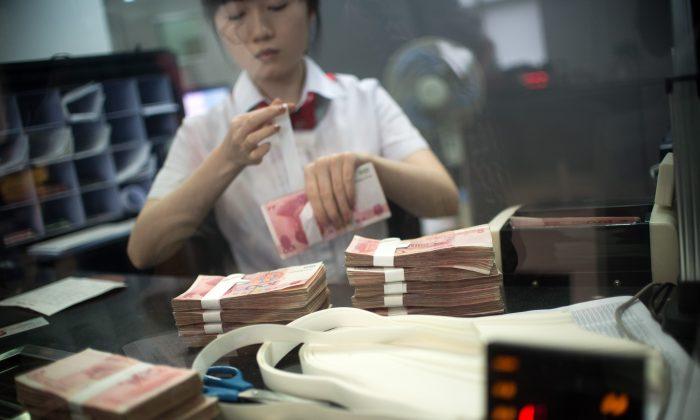Financial reporting organizations in China are tracking a mounting debt crisis that stems from excessive borrowing by local governments, often used to pay existing debts. This matter has not been monitored by China’s central government because local governments are not required to report monies raised through local government financing vehicles (LGFV).
China’s Ministry of Finance has acknowledged that by the end of 2021, the local government debt balance had reached approximately $4.81 trillion. While this figure is within the approved limits posed by the Chinese government, it excludes the local unreported debts, mainly LGFV debts that include loans and bonds, which reached $6.91 trillion in mid-2020, according to a report by Kaiyuan Securities.
LGFVs Explained
The LGFVs were companies originally set up by city or provincial governments to finance building projects and public works, and circumvent Beijing’s ban on their Issuance of bonds. Bonds sold by the LGFVs are one of the ways local authorities borrow money to increase spending without including it on their official balance sheets. Yet, the debt carries an implicit government guarantee of repayment.LGFVs flourished following the 2008 global financial crisis as a way of funding China’s infrastructure building spree, and were encouraged by the central government. As a result, “China’s debt has been swelling by about 20 percent a year since then, dwarfing nominal gross domestic product growth,” Choyleva said.
Chinese Cities Plagued by Excessive Debt Ratios
Last October, Datapower and Tencent Finance jointly launched a “City Debt Ratio Ranking” report indicating the fiscal debt ratio was calculated by combining a local government’s explicit and implicit debts, i.e. Debt balance + LGFV Bonds / Fiscal Revenue. According to international standards, the prevailing risk warning line for local government fiscal debt ratio is 80-120 percent.The survey sample included 86 first- and second-tier cities within China. As of 2020, 85 cities had debt ratios of more than 100 percent and 75 had doubled their debt ratios since 2019. Shanghai came in at 122 percent while Beijing and Guangzhou both reached over 200 percent. The city with the highest debt ratio was Guiyang at 929 percent. Shenzhen was the only city with a debt ratio below 20 percent.
According to a report by Kaiyuan Securities, as of mid-2020, the implicit debt of local governments had reached $6.91 trillion, much higher than the explicit debt of $3.77 trillion, and the combined debt ratio of the two was nearly 250 percent, which is over two times the alert line.
The report said, “At present, many local governments can only keep rolling over their debts by borrowing new money to repay old ones. Once the growth rate of the local economy and fiscal revenue declines and cannot match the growth rate of debt burden, the government debt risk will accumulate rapidly.”
Local Hidden Debt
In January, the CCP’s official media, Xinhua, estimated that within the first quarter of 2022, China’s local governments are likely to issue special bonds totaling $230 billion. However, this estimate may be low.China’s Economic Reference News provided the following quote from Mr. Tang LinMin, a researcher with the China International Futures Corporation. He said, “At present, many places have issued plans for local bonds in 2022, and the proposed issuance scale in the first quarter is at least $110.4 billion, among which the scale of new special bonds is at least US$78.8 billion. Based on these figures, it is expected that the scale of local bond issuance in the first quarter could reach about US$270 billion, close to the situation in 2020.”
In an interview with the Epoch Times, Professor Zhang, a Chinese economist, said China was short of money on all fronts. The economy is in bad shape, the international situation is bad, and expenses are still huge. While issuing bonds is likely to provide relief, how effectively this will work is uncertain. Adding to this uncertainty is the CCP’s lack of transparency on how it spends money.
The Epoch Times also spoke about the CCP’s reliance on bonds with Xia Yifan, a Japanese commentator. Xia said the credit guarantor of bonds is the CCP at the local government level. But local governments lack credit to provide to people. Nor do they have the sophistication to know what to do with their money, what they will achieve, how much they expect to earn, how they will repay, etc.
Like Professor Zhang, Xia believes that issuing bonds is likely to provide relief to local governments, but this approach does not qualify as a reliable economic stimulant. Instead, this makes it possible for corrupt officials to worsen China’s unfavorable debt ratio, without consequence.





Friends Read Free